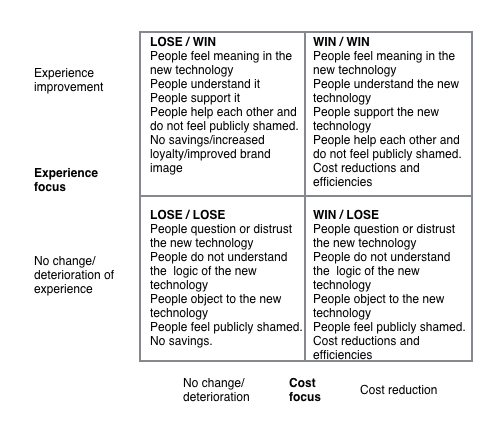Tor Andreassen from the Centre for Service Innovation (link) recently sent me a link to the New York Times article, reporting some work from England about how self-service checkouts encourage or even result in stealing. This is work from the UK, that has also been reported during the summer in the British press, which I find quite flawed. Not so much the statistics, but the reasoning behind it. And this got me thinking about the whole self-service checkout experience.
Funnily enough, none of the reporting, (including the orginal article), takes a customer-centric view. They either take a fraud-based view, or a cost-benefit economic view. However, they all say between the lines that the customers do not generally like the new self service checkouts.
There is essentially a core design issue revolving around the theme of a book we are working on – trust based innovation (and the customer experience). I have talked to a lot of people during the past 6 months here in Denmark about the self-service check outs that the supermarkets are using here. They are technologically sophisticated machines with sensitive weighing scales, that identify weight in (the shopping you put in the basket)  and weight out (what you transfer to your shopping bag) and where you scan items yourself. Tesco use them in the UK too,  and they regularly give the well known error message “‘unexpected item in the bagging area”. If there is a mismatch, you get an error message, flashing red light and are supposed to signal help from some kind assistant. Instead the lights generally spotlight innocent people suspected of stealing, for all to see.
- Many feel that the reason for installing them is to cut costs, not make things better for them as customers. This lack of benevolence gives them a tendency to have a negative attitude from the start.
- The conceptual fit of the machines sucks. The conceptual model the machine uses does not match the mental model shoppers have for a checkout. this makes you have to try to understand what the machine wants you to do, rather than what you think is the natural thing for you to do.
- The ease of use of the machines suck. Instructions, dialogue steps, help and error messages do not communicate to the shopper and make things difficult. One mistake aborts the whole process. What does ‘unexpected item in the bagging area’ really say or mean to an everyday shopper? What is the bagging area, where is the bagging area, where does the term come from? Have you ever heard a customer use the term bagging area in natural conversation?
- Many feel that the machines and the logic behind them are the essence of distrust. That they express a deep seated mistrust – we dont trust any of you, and that includes you, and have introduced a mistrust machine to try catch you out.
- Many have experienced that the machines publicly shame you (an incredibly strong demotivator) and identify you as a thief in front of everyone else, even though you might have just done something the machine doesn’t understand.
- In terms of experience, we know that the end of a journey is one of the strongest indicators of the remembered experience. The checkout experience should be an area focused upon, to lift the final points of contact. By making the checkout experience so lousy, the supermarkets are basically negating much of their experiential investments elsewhere in the supermarket (for example the smell of fresh bread etc.

